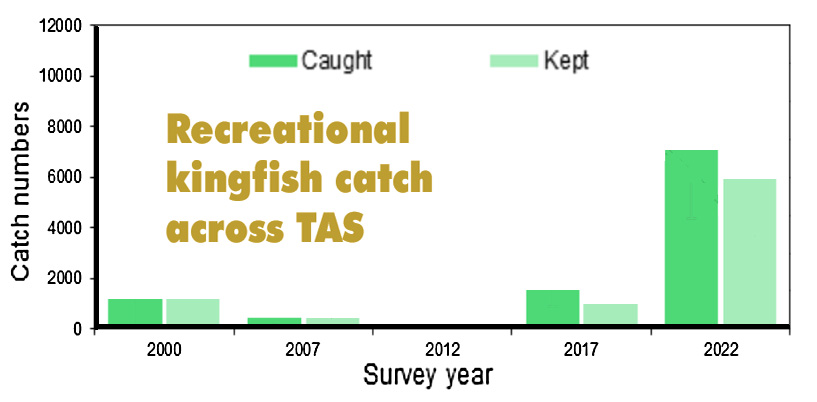WFS Admin

Though there has been damage to endemic habitat, Tasmanian fishos are seeing some benefits to warming waters.
Catches of yellowtail kingfish, pink snapper and king george whiting are increasing in the island state’s coastal waters.
Perhaps the elusive mulloway will show up in due course?
A steady decline in the recreational catch of endemic species such as sand flathead, black bream and yelloweye mullet and the introduced gamefish trout has also been noted, likely the result of various factors.
For anglers considering chasing “kingies”, peak kingfish action off Tasmania is usually in January/February. They show up at many inshore hotspots, and fall to much the same methods that take Aussie salmon, which are also abundant in Tassie waters.
